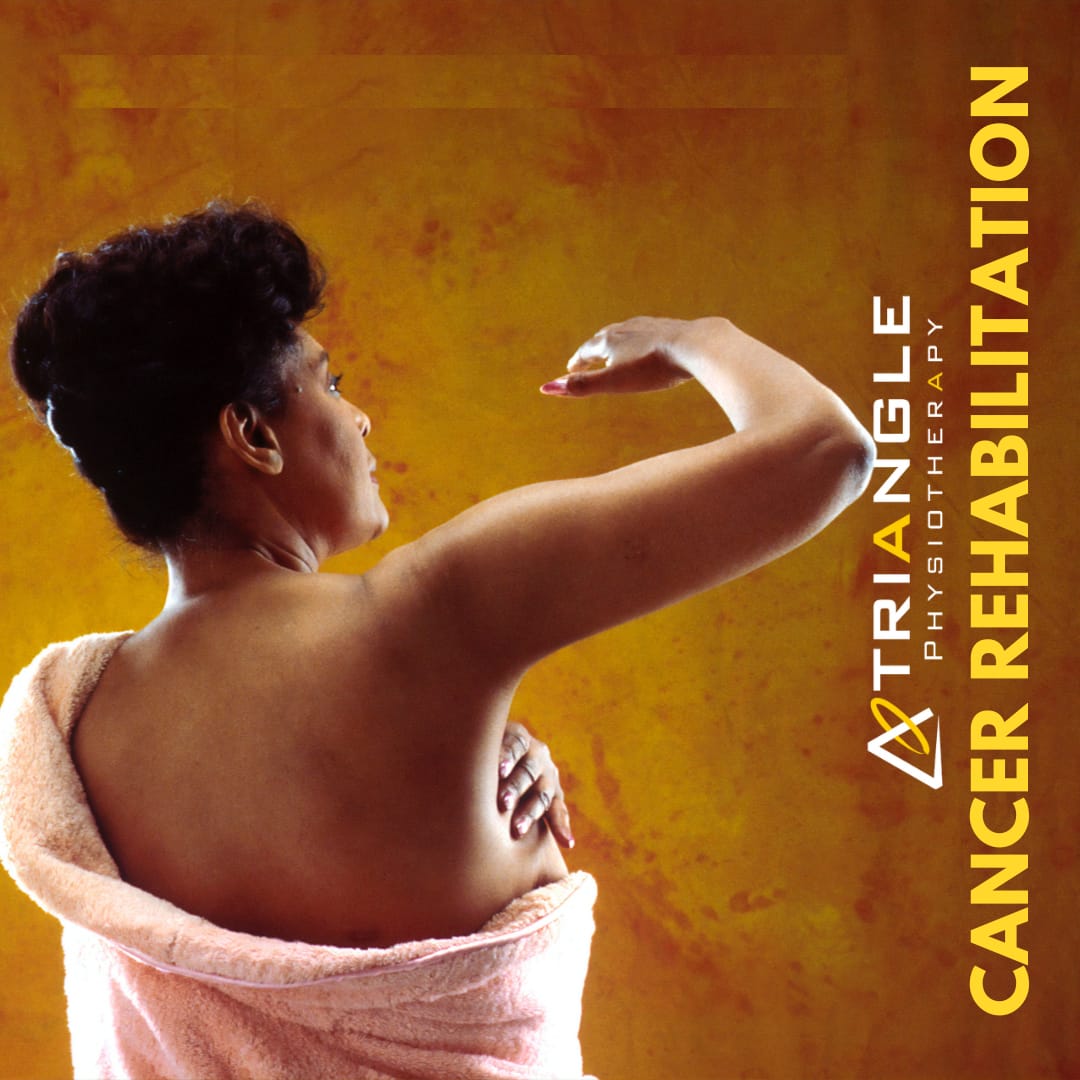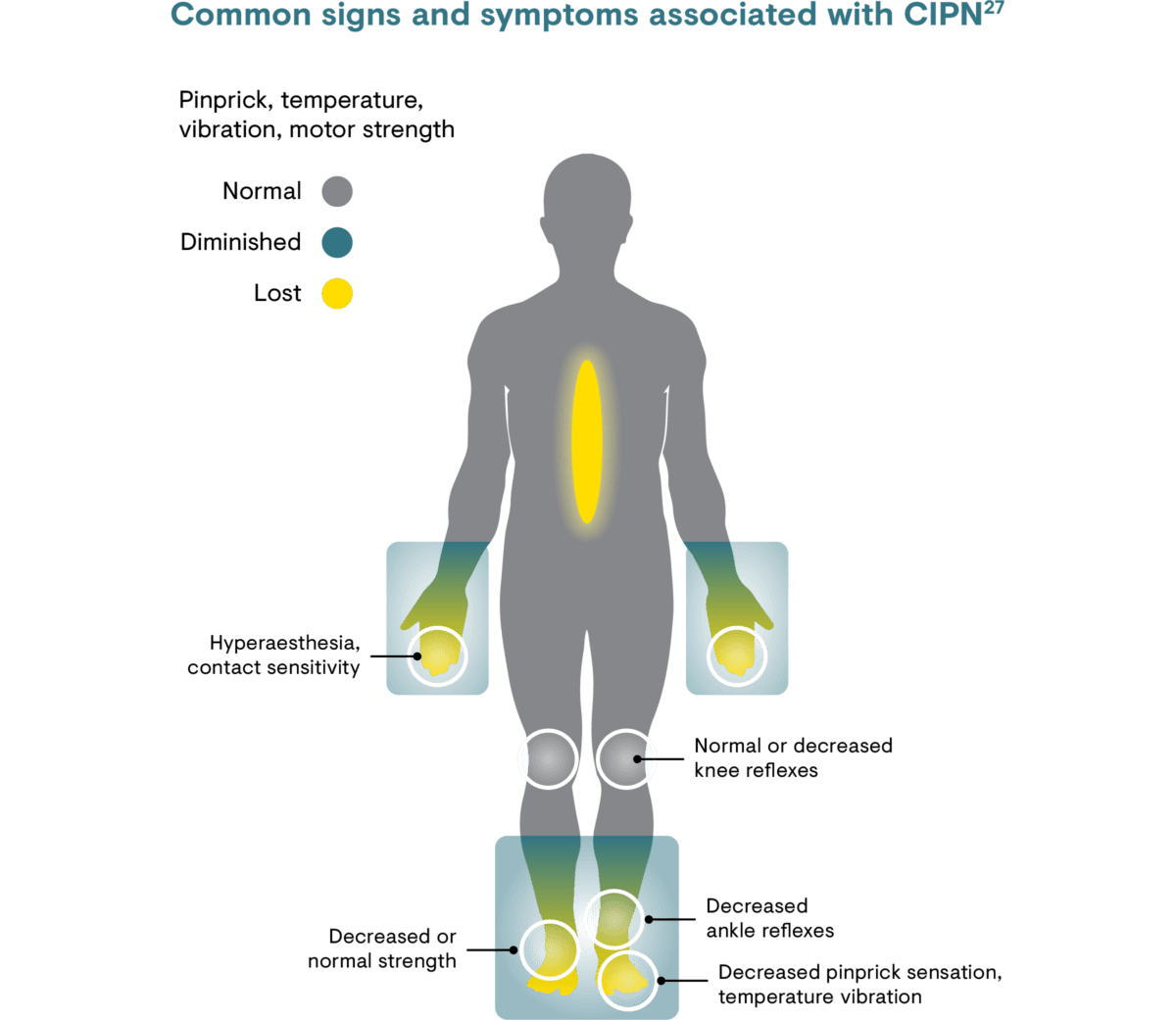Axillary Web Syndrome (AWS) is a condition that often affects individuals who have undergone breast cancer treatments, particularly those who have had axillary lymph node dissection (ALND) or radiation therapy. This condition, also known as “cording,” involves the development of tight bands or cords of tissue in the armpit area, which can extend down the arm, causing pain and restricting movement. Though it is a common aftereffect of breast cancer treatment, AWS is not always well understood. In this blog, we’ll explore what AWS is, its symptoms, how it affects daily life, and how physiotherapy can help manage the condition.
If you have more questions about Axillary Web Syndrome, the cancer rehab physiotherapists at Triangle Physiotherapy would be more than happy to help you out.
What is Axillary Web Syndrome?
AWS occurs when tight bands of tissue, or “cords,” form under the skin in the armpit (axilla) and sometimes along the upper arm. These bands are typically made of scar tissue or fibrosis that develops after the removal of lymph nodes or following radiation therapy, both of which are common treatments for breast cancer. These tight bands can cause significant discomfort, limit the range of motion, and affect daily activities, such as reaching, lifting, or even carrying objects.

Picture Credit: healthline.com
AWS is usually diagnosed when the cords are palpated (felt) by a healthcare professional during a physical exam. In some cases, individuals may notice the bands themselves or feel a pulling sensation in the arm or chest.
Symptoms of AWS
The most noticeable symptom of AWS is the formation of tight, rope-like cords in the armpit area, but other symptoms may include:
- Pain: The cords can be painful to the touch and can cause discomfort during everyday activities.
- Restricted Mobility: Individuals with AWS often experience limited range of motion in the shoulder and arm, particularly when reaching overhead or behind.
- Tightness: A sensation of tightness or pulling in the chest, armpit, and down the arm is common.
- Swelling: Some people may also experience swelling in the arm or hand due to lymphatic fluid build-up, especially if there has been lymph node removal.
These symptoms can make simple tasks, like putting on a shirt, lifting objects, or even driving, much more difficult. For many people, AWS can impact their emotional well-being as well, as chronic pain and restricted mobility can be frustrating and limiting.
How Does AWS Affect Daily Life?
The symptoms of AWS can significantly affect an individual’s daily life. Limited shoulder and arm mobility can interfere with work, hobbies, and social activities. Pain and tightness may make it hard to perform basic activities, like reaching for items on a high shelf, carrying groceries, or participating in exercise. As a result, people with AWS may become less active, which can lead to muscle weakness, poor posture, and a reduced quality of life.
Additionally, AWS can lead to long-term issues, such as decreased self-esteem and increased stress, as individuals cope with their physical limitations. It’s important for people with AWS to seek support and find ways to manage the condition so that they can maintain a high quality of life during their recovery journey.
How Physiotherapy Can Help
Physiotherapy is one of the most effective treatments for managing AWS. A physiotherapist can develop a personalized rehabilitation program to help manage pain, improve mobility, and reduce the tightness associated with the condition. Common physiotherapy treatments for AWS include:
- Manual Therapy: Techniques like massage or myofascial release can help release tension in the affected tissues, reducing pain and increasing flexibility.
- Stretching and Mobility Exercises: Physiotherapists will guide patients through stretching exercises to improve the range of motion in the shoulder and arm. This can help reduce tightness and discomfort, allowing for greater movement.
- Strengthening Exercises: Strengthening the muscles around the shoulder and upper arm is essential for improving function and reducing strain. Physiotherapists can design specific exercises to help restore muscle strength and support the joint.
- Scar Tissue Management: Physiotherapists can use specific techniques to address scar tissue buildup that can contribute to AWS, helping to soften and break down fibrous tissue, improving movement and reducing pain.
Axillary Web Syndrome is a condition that can develop after breast cancer treatments and cause pain, tightness, and limited mobility. While it can be frustrating and limiting, it’s important to know that physiotherapy can be an effective way to manage the symptoms and improve quality of life. By working with a physiotherapist, individuals with AWS can regain movement, reduce discomfort, and take steps toward better overall health and well-being. If you or someone you know is experiencing symptoms of AWS, don’t hesitate to seek help and explore the benefits of physiotherapy for relief. Our Cancer Rehab Physiotherapists at Triangle Physiotherapy have training in helping individuals who have had cancer treatments to improve their quality of life.
Chemotherapy is an essential treatment for many types of cancer, but it often comes with side effects that can vary widely from person to person. While chemotherapy works to eliminate cancer cells, it can also affect healthy cells, leading to a range of physical symptoms. These side effects can be temporary, but they may be uncomfortable and affect your daily life.
When it comes to the side effects of cancer treatment, the cancer rehabilitation physiotherapists at Triangle Physiotherapy are knowledgeable and trained in helping you regain function and get back your quality of life.

In this post, we’ll cover 5 common symptoms to expect after chemotherapy and tips on how to manage them.
1. Fatigue
Fatigue is one of the most common side effects following chemotherapy. Unlike typical tiredness, this type of exhaustion can be overwhelming and persistent, making even the smallest tasks feel like a major effort. Chemotherapy can affect your red blood cells, which are responsible for carrying oxygen throughout your body, leading to feelings of extreme tiredness.
- What you can do: Try to rest when needed, but don’t forget to incorporate light activity into your day, like short walks or stretching. Small, frequent activities can boost your energy levels and help prevent muscle weakness. Additionally, make sleep a priority, and aim for a balanced diet to ensure your body has the nutrients it needs to recover.
2. Nausea and Vomiting
Chemotherapy drugs can trigger nausea and vomiting, which are especially common right after treatment. These symptoms occur because the chemotherapy affects the gastrointestinal tract, leading to discomfort in your stomach. The severity of nausea can vary depending on the drugs used, but it’s one of the most common concerns for many patients undergoing treatment.
- What you can do: Your doctor may prescribe anti-nausea medications, so make sure to take them as directed. Drinking small sips of water, ginger tea, or clear broths can help settle your stomach. Also, eating smaller, more frequent meals—rather than larger meals—can prevent your stomach from feeling overwhelmed. Avoiding heavy, greasy, or spicy foods may also reduce nausea.
3. Hair Loss
Hair loss is often one of the more noticeable side effects of chemotherapy. The powerful medications used during chemotherapy target rapidly dividing cells, including those in your hair follicles, which can cause your hair to fall out. Hair loss can begin within a few weeks of starting chemotherapy and can affect not just the scalp, but eyebrows, eyelashes, and body hair as well.
- What you can do: While hair loss is difficult to avoid, there are ways to manage it emotionally. Many people choose to wear wigs, scarves, or hats to help them feel more comfortable. If hair loss is affecting your self-esteem, consider talking to a counselor or joining a support group to help cope with the emotional impact. The good news is that hair usually starts to grow back once treatment is complete, though it might have a different texture or color temporarily.
4. Sensation Loss (Neuropathy)
Chemotherapy can cause nerve damage, leading to sensations of numbness, tingling, or weakness, particularly in the hands and feet. This condition, known as peripheral neuropathy, can be distressing and affect your ability to perform daily tasks like buttoning a shirt or walking. It happens because chemotherapy can damage the nerves responsible for sending signals to the brain, leading to these sensations.
- What you can do: While there’s no quick fix for neuropathy, there are ways to manage it. Talk to your doctor about medications that can help with nerve pain or discomfort. You might also benefit from physical therapy, which can help you improve balance and coordination. Taking care of your feet and hands by avoiding injury and wearing comfortable, well-fitting shoes can also reduce the impact of neuropathy. If you’re struggling with these symptoms, your healthcare provider can suggest exercises or tips to help alleviate the discomfort.
5. Changes in Appetite and Taste
Another side effect many chemotherapy patients experience is a shift in their appetite or the way food tastes. Chemotherapy can alter your sense of taste, often causing food to have a metallic or bitter flavor. In some cases, you might feel a loss of appetite, making it harder to eat enough to maintain your strength.
- What you can do: Try eating smaller meals more often throughout the day. If your appetite is low, experiment with foods that have strong flavors, such as citrus fruits or savory herbs, to help stimulate your taste buds. If food tastes off, using plastic utensils or drinking through a straw can sometimes help reduce the metallic taste. Additionally, staying hydrated and maintaining a balanced diet is important to ensure you’re getting enough nutrients.
Chemotherapy can be a life-saving treatment, but it often comes with side effects that may affect your quality of life. Fatigue, nausea, hair loss, sensation loss, and changes in appetite or taste are common symptoms that many patients face, but they are manageable with the right care and support. It’s important to communicate openly with your healthcare team about any symptoms you’re experiencing so they can adjust your treatment plan or provide supportive care to ease discomfort.
Cancer rehab will help you get back on your feet and help get rid of your neuropathy gradually. For breast cancer rehab, please remember to consult our expert physios who will help you get rid of the tight inelastic cords that formed due to radiation. You may notice it as shoulder restriction, but it needs to be treated by a physiotherapist over time.
Remember, recovery from chemotherapy is a gradual process, and many of these side effects will improve after treatment ends. Focus on taking care of your body, staying connected with your medical team, and reaching out for support when needed.
Reach out to us at Triangle Physiotherapy to book an assessment to get help managing Cancer Treatment side effects.
Chemotherapy-induced peripheral neuropathy (CIPN) is a common side effect that can significantly impact the quality of life for cancer patients. As chemotherapy drugs target rapidly dividing cells, they can inadvertently affect nerve cells, leading to symptoms that range from mild discomfort to debilitating pain. Understanding CIPN and exploring management strategies are essential steps in supporting patients through their cancer journey.
The Cancer Rehabilitation Physiotherapists at Triangle Physiotherapy are trained to help you navigate through the side effects of cancer treatment.
Understanding Chemotherapy-Induced Peripheral Neuropathy
CIPN is characterized by damage to the peripheral nerves, which can manifest in various ways, including tingling, numbness, burning sensations, and weakness in the hands and feet. This condition is not only uncomfortable but can also hinder daily activities and diminish overall well-being. Different chemotherapy agents, particularly platinum-based drugs, taxanes, and vinca alkaloids, are known to pose a higher risk for developing neuropathy.
Symptoms and Impact
The symptoms of CIPN can be diverse, including:
- Sensory changes: Tingling, numbness, or a “pins and needles” sensation.
- Motor issues: Weakness that may affect fine motor skills.
- Pain: Burning or sharp pain that can be constant or intermittent.
- Balance problems: Difficulty walking or maintaining stability, increasing the risk of falls.
The psychological impact of CIPN should not be overlooked, as patients may experience anxiety, depression, or a sense of loss of independence. Understanding the multifaceted nature of CIPN is crucial for effective management.

Picture Credit: https://www.grunenthal.com
Management Strategies
Education and Awareness
Empowering patients with knowledge about CIPN is vital. Understanding the potential for neuropathy allows patients to communicate effectively with their healthcare team and advocate for their needs. Regular screenings for neuropathy can help catch symptoms early, allowing for timely intervention.
Pharmacological Approaches
Medications such as anticonvulsants (e.g., gabapentin, pregabalin) and antidepressants (e.g., duloxetine) are often used to manage neuropathic pain. While these medications can be effective, it’s important for patients to discuss potential side effects and the best options for their individual situation with their oncologist.
Physical Rehabilitation
Engaging in physiotherapy can significantly aid in managing CIPN symptoms. A tailored rehabilitation program may include:
- Strength training: Gentle exercises to improve muscle strength and coordination.
- Balance training: Activities to enhance stability and reduce the risk of falls.
- Sensory retraining: Exercises that help patients re-learn normal sensations and improve tactile discrimination.
Incorporating regular physical activity can also boost overall health and mood.
Lifestyle Modifications
Adopting healthy lifestyle choices can help mitigate CIPN symptoms. Patients may benefit from:
- Nutritional support: A balanced diet rich in antioxidants and vitamins can support nerve health.
- Hydration: Staying well-hydrated may help reduce symptoms.
- Mindfulness practices: Techniques such as yoga, meditation, and deep-breathing exercises can reduce stress and improve overall well-being.
Complementary Therapies
Some patients find relief through complementary therapies such as acupuncture, massage, or mindfulness-based practices. While research on these therapies is still ongoing, many report positive outcomes in managing pain and improving quality of life.
CIPN FAQs
What should I do if I experience symptoms of CIPN?
It’s important to communicate any symptoms to your healthcare provider as soon as they arise. Early intervention can help manage symptoms more effectively.
Can CIPN be prevented?
While not all cases of CIPN can be prevented, discussing dose adjustments or alternative therapies with your oncologist may help mitigate risks.
How long does CIPN last?
The duration of CIPN varies among patients. Some may experience symptoms that resolve over time, while others may have persistent issues. Regular follow-up with your healthcare team is essential.
Is there a cure for CIPN?
Currently, there is no definitive cure for CIPN, but various management strategies can significantly alleviate symptoms and improve quality of life.
How common is CIPN?
Peripheral neuropathy after chemotherapy is very common. Experts estimate it’s experienced by 30% to 50% of patients who receive these types of chemotherapy.
The drugs most likely to cause CIPN are used to treat the most common types of cancer, including breast cancer, colon cancer, lung cancer, and prostate cancer.
Where can I find a physiotherapist that can help me with CIPN?
Triangle Physiotherapy has physiotherapists that are trained in helping you navigate the side effects caused by cancer treatments.



